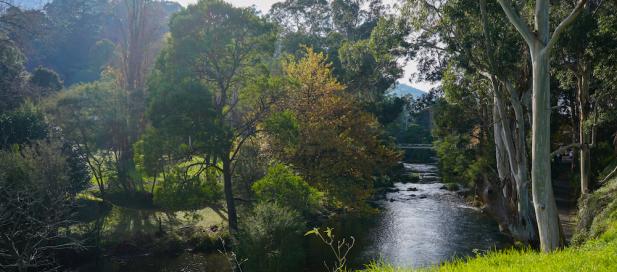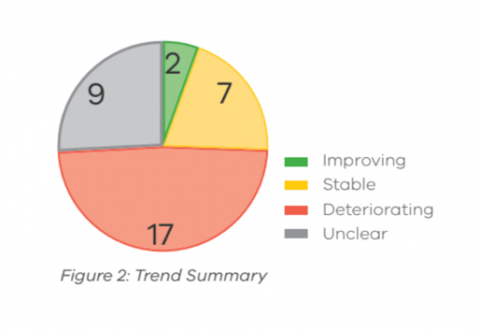
A comprehensive report card on the health of the Yarra, Victoria’s most iconic river and its surrounding parklands has been released. The State of the Yarra and Its Parklands 2018 Report (SoY) provides a baseline on the environmental condition of the Yarra River corridor. “This is the first time that the health of the Yarra River has been assessed in this way,” says Commissioner for Environmental Sustainability Dr Gillian Sparkes. “There are areas of the Yarra that are doing well but major improvements are required in areas including litter, pollution, sewerage, stormwater and threatened species.”
The SoY assesses the health of the river through 36 indicators that include tourism, litter, pollution, invasive freshwater plans, streamflow and water quality. “We have produced an independent, objective report that is designed to improve environmental outcomes for this river that means so much to Victorians,” says Dr Sparkes.

Only two indicators (6%) are assessed as ‘improving’. 17 indicators have been assessed as ‘deteriorating’. Significantly, 16 of the 25 environmental health indicators (64%) have been assessed as in a ‘poor’ state with a deteriorating trend.
“The indicators tell us that the Yarra is in a poor but stable condition,” says State of the Yarra and Its Parklands 2018 Report lead author Dr Rebecca Koss. “This condition is due to factors such as Melbourne’s population growth, stormwater, sewerage and decreasing rainfall due to climate change. We know that since 2012, the Yarra’s annual streamflow has halved.”

“Although the Yarra River is under environmental pressure, there are opportunities to strengthen its resilience. Extending the current interim Yarra River Protection Planning Controls from Warrandyte to the Yarra Ranges National Park in combination with creating connected habitat corridors will protect critical ecosystems, such as billabongs and floodplains, and our native animals and plants during periods of environmental stress such as drought or floods.
The report includes a summary of recommendations designed to support policy- regulators, environmental managers, scientists and the wider Yarra River community, and advise government to improve environmental outcomes for the Yarra River and its Parklands. The recommendations prioritise strategies that will improve multiple environmental outcomes. These recommendations establish a blueprint for immediate action and future focus, to support the Victorian government to keep improving its environmental monitoring and management systems, and capabilities over the next decade and beyond. The recommendations support key legislative and policy frameworks including the Yarra River Protection (Wilip-gin Birrarung murron) Act 2017, Climate Change Act 2017, Yarra River Action Plan, Biodiversity 2037, Water for Victoria and the (pending) Yarra Strategic Plan. Data has been gathered from 13 organisations including Melbourne Water, Victorian Aboriginal Heritage Council, Aboriginal Victoria, the Victorian Department of Environment, Land, Water and Planning (DELWP), Parks Victoria and the Victorian Environmental Water Holder,
“In addition to the strong scientific evidence base, this report provides a narrative that links environmental condition to cultural, social and economic aspirations for a healthy and flowing Yarra River,” says Dr Koss. “That is the end game, protecting this precious natural asset.”
